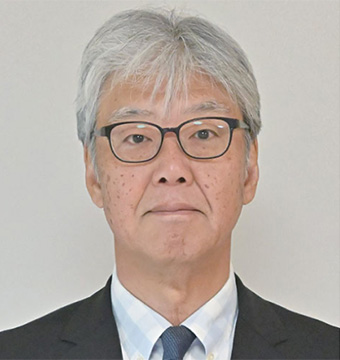 Dr. Kuroda graduated from the Department of Electrical and Electronic Engineering, Faculty of Engineering, Tokyo Institute of Technology in March 1980, completed the Interdisciplinary Graduate School of Science and Engineering, Tokyo Institute of Technology in 1982, and joined Japan Broadcasting Corporation (NHK) in April of the same year. In 1997, he became a Senior Research Engineer at the Science & Technology Research Laboratories (NHK STRL), and received a doctorate in engineering from Tokyo Institute of Technology in the same year. In 2008, he served as the Deputy Head of the Corporate Planning Bureau of NHK, as the Deputy Director of NHK STRL in 2012, and as the Director of NHK STRL from 2014 to 2018.
Dr. Kuroda graduated from the Department of Electrical and Electronic Engineering, Faculty of Engineering, Tokyo Institute of Technology in March 1980, completed the Interdisciplinary Graduate School of Science and Engineering, Tokyo Institute of Technology in 1982, and joined Japan Broadcasting Corporation (NHK) in April of the same year. In 1997, he became a Senior Research Engineer at the Science & Technology Research Laboratories (NHK STRL), and received a doctorate in engineering from Tokyo Institute of Technology in the same year. In 2008, he served as the Deputy Head of the Corporate Planning Bureau of NHK, as the Deputy Director of NHK STRL in 2012, and as the Director of NHK STRL from 2014 to 2018.Over the years, he promoted the digitization of broadcasting, ultimate video and sound of UHDTV (4K/8K), etc., and contributed greatly to the development of technology in the broadcasting field. In particular, regarding the digitalization of terrestrial television broadcasting, he played a central role from research and development of transmission system to practical application, and made remarkable achievements.
As a digital terrestrial broadcasting system, the Band Segmented Transmission - Orthogonal Frequency Division Multiplexing (BST-OFDM) system was devised in 1993 to make effective and flexible use of frequency resources, and the development of a transmission system that could be used for both television and audio broadcasting was promoted. In 1997, based on BST-OFDM, an ISDB-T (Integrated Services Digital Broadcasting - Terrestrial) system was proposed, which enables the simultaneous transmission of high-definition television and One-Seg service with a channel bandwidth of 6 MHz. One-Seg is a particularly epoch-making system that enables the reception of television video and audio on mobile phones. At the Information and Communications Council of MIC (Ministry of Internal Affairs and Communications) and Development Subcommittee of ARIB (Association of Radio Industries and Businesses), he took the lead in promoting the standardization of the ISDB-T system. And also, he actively carried out international standardization activities in ITU (International Telecommunication Union). As a result, ISDB-T was approved as the Japanese standard system in 1999, and was recommended as a global standard system in ITU-R in 2000, and it has been widely used not only in Japan but also overseas.
At the time of putting digital terrestrial broadcasting into practical use, he played a central role and worked hard to put it into practical use, including being the chief of the working group of the Digital Broadcasting System Development Subcommittee of ARIB and the chief of operation guidelines of the Association for Promotion of Digital Broadcasting (D-pa). After that, he chaired the ARIB Digital Broadcasting System Development Subcommittee until November 2014, and has continuously contributed to the spread and promotion of the standardization and revision of digital broadcasting standards. In addition to digital terrestrial broadcasting, he also took the lead in pioneering research in the entire broadcasting field such as in the R&D and standardization of FM subcarrier broadcasting, the promotion of satellite broadcasting to 4K/8K, Internet utilization technology, and advanced program production technology.
For the above achievements, he has received many awards such as the Chairman's Award, Radio Achievement Award of the ARIB, C&C Award of the NEC C&C Foundation, ICT Business Encouragement Special Award of the Telecommunications Association, the Japan Patent Attorneys Association Chairman's Award, National Invention Award of Japan Institute of Invention and Innovation, and the IEICE's Achievement Award. In addition, his leadership and high level of expertise can be recognized from the fact that he has held important positions such as Cooperative Member of Science Council of Japan, Technical Strategy Committee Expert Member of Information and Communications Council of MIC, Visiting Faculty of Research and Development Cooperation Headquarters, National Institute of Informatics, the IEICE's APMC 2014 Organizing Committee and Vice Chairman of the Institute of Image Information and Television Engineers.
As mentioned above, we are convinced that his achievements in technological innovation in the broadcasting field to the information communication field are extremely remarkable, and that he is worthy of receiving the IEICE's Distinguished Achievement and Contributions Award.